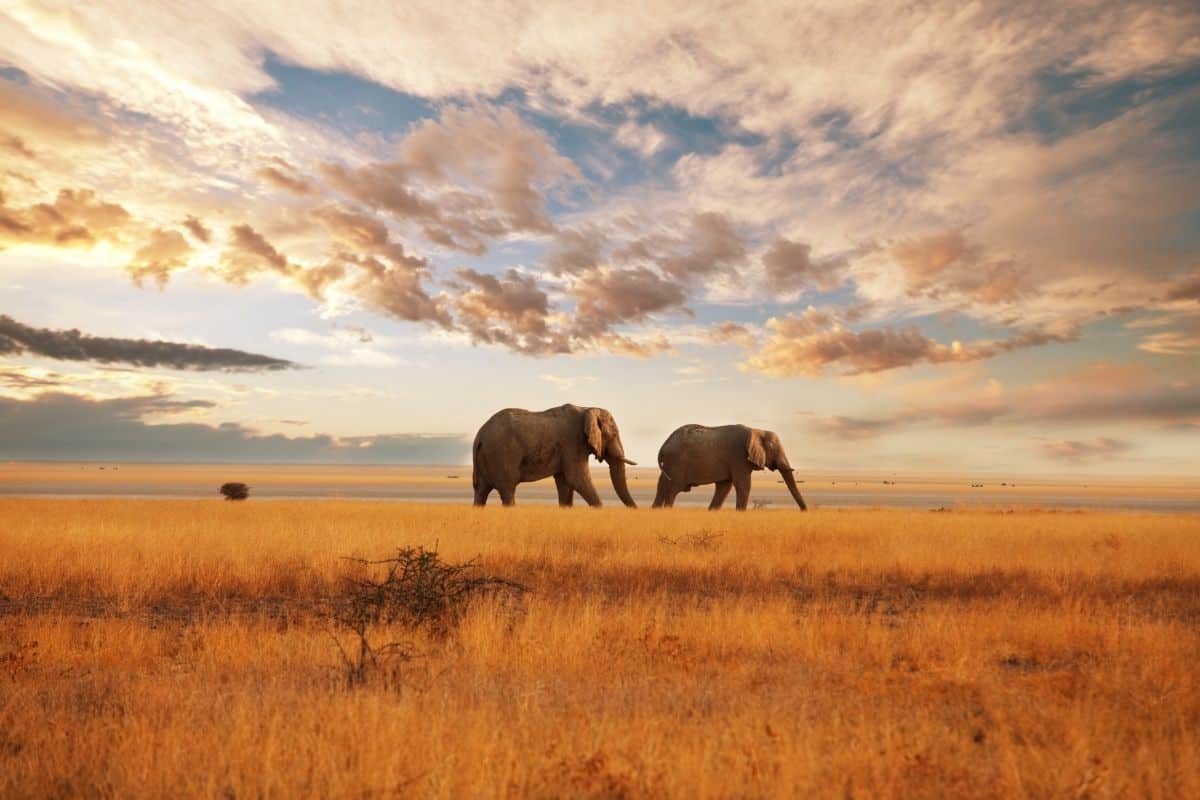
Editor’s Note: We share travel destinations, products and activities we recommend. If you make a purchase using a link on our site, we may earn a commission.
It isn’t every day you see a lioness mid-hunt, tail rigid, belly sunk low with her eye on a gazelle. But there I was with my family and our guide Carlos as she stalked her prey.
As she crept closer and closer to her quarry, I began to wonder if deer hunting and a lifetime of David Attenborough nature specials was enough preparation for watching this lioness do what she was built for: subduing her prey in a flash of muscle and grace.
But then, an ear twitches and hooves flash into the distance. She misses and slinks into the dun-colored grass that parts and closes behind her.
“That happens,” said Carlos. “They aren’t perfect.”
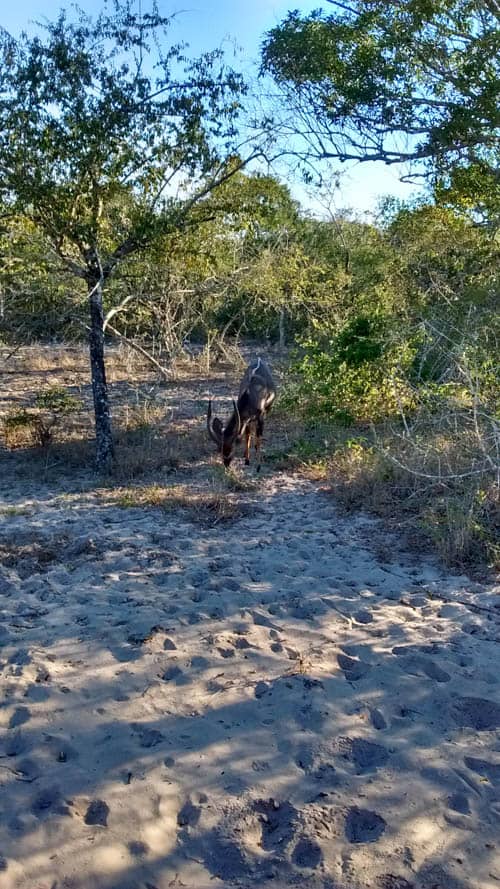
Waking Up In Tembe Elephant Park
Earlier that morning, having woken well before dawn, layered up knowing we wouldn’t be warm until the sun had risen, we set out on our first game drive. We were in Tembe Elephant Park.
A 74,000-acre reserve in the state of KwaZulu-Natal, South Africa, known as home to the largest elephants in the world. This included Isilo, who until his death in 2014 was the largest in the southern hemisphere.
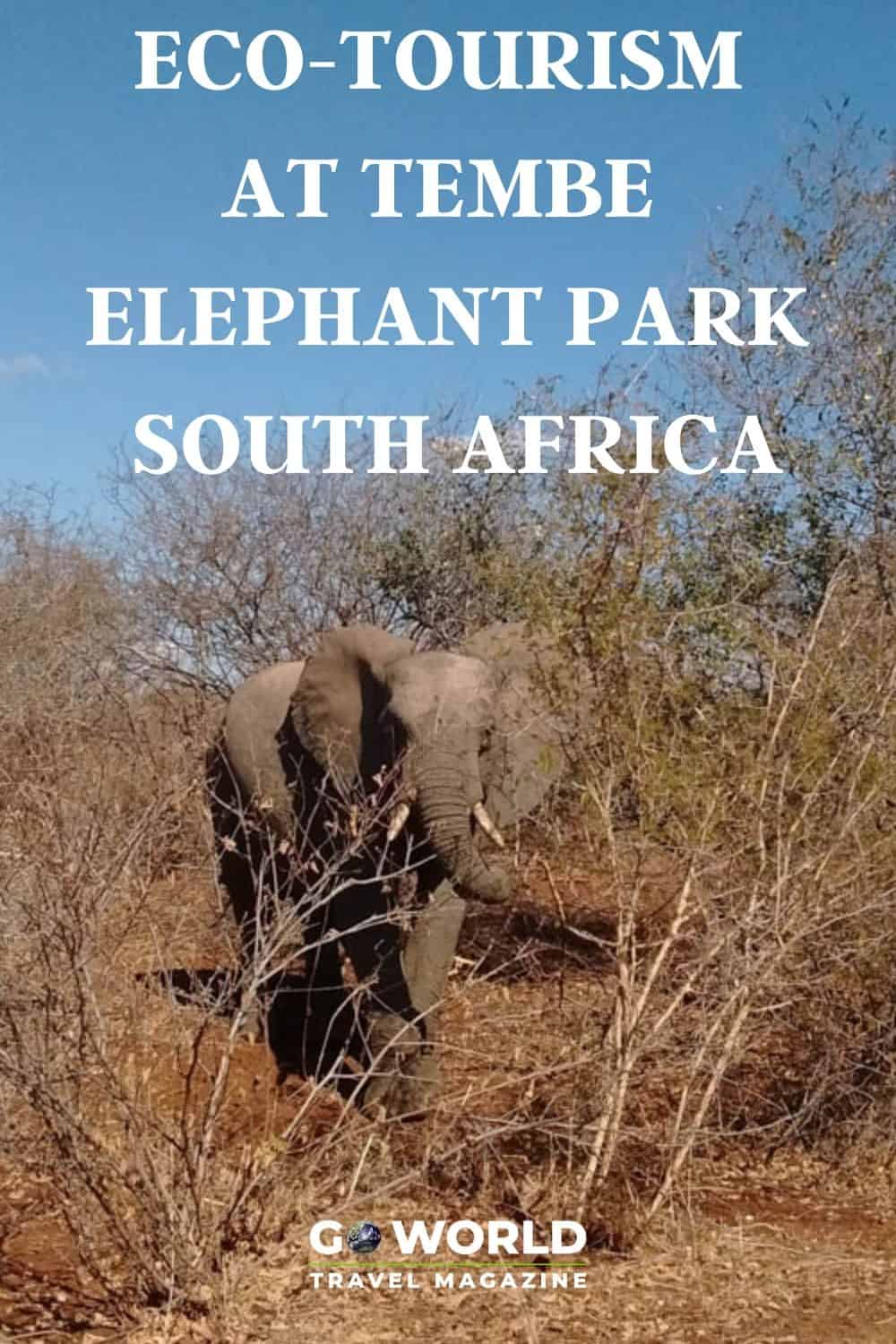
As we bumped along, sometimes getting bogged down (the deep sand of Tembe is notorious for getting cars stuck) it seemed as if wildlife materialized from the forest itself.
A herd of zebras, or gazelles, or nyalas, the lesser-known cousin of the kudu, appearing from the dusty savannah. We spied the necks of giraffes ambling through acacias, long tongues working nimbly amongst the thorns, and white rhinos, grazing in the distance.
After a lot more bumping, we made it to our destination for the morning, the park’s game hide. It sits overlooking a small watering hole. It was one of the few verdant oases in a place otherwise starved for water, making it the perfect location to spot the park’s main feature, its elephants.
We walked along, through a walled path to reach the hide. “To protect from lions,” said Carlos. It was sobering to realize that without a guide, a motorized vehicle, and ten-foot-tall walls, I wouldn’t be so different from that gazelle.
“Any minute,” said Carlos, although I detected some uncertainty in his voice. “Are they usually here by now?” I asked. “They have for the past three days; I’m surprised we’re not seeing any,” he replied.
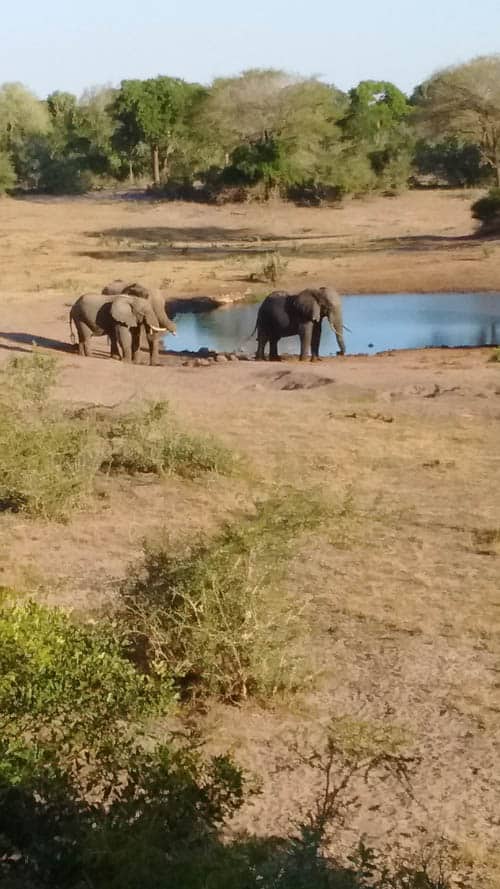
Elephant Sightings in Their Natural Habitat
But then, as if his words had spoken them into existence, a plodding and scraping noise came from the bush. “Elephants,” Carlos whispered. And soon they arrived, three elephants lumbering into the clearing, drawn to the water in the rising heat of the day.
Elephants, even the young ones, look as if their skin is several sizes too big. Their faces are open and expressive. Trunks working like an additional limb transferring food to their mouths, or reaching out to touch the flank of a neighbor. Their ears wave outwards, fanning away flies and the oppressive heat of the day.
They’re more like us than we might guess. They mourn for their dead as we do, show empathy, and astonishingly, can even replicate human speech. They’re social creatures that form tight friendships and stay in family groups for life.
Tembe stands to protect their future. A future where these great creatures will be free from harm; a future where their tusks sell ecotours, not ivory.
Back in the hide, the sun was setting. “Time to go,” Carlos said. “We don’t want to be out in the dark. Dark is when the leopards hunt.” I didn’t want to go but becoming a leopard’s dinner wasn’t high on my priority list either, so I made my way toward the door.
Before I left though, I looked back one more time at the elephants now dusting themselves in the setting sun. I didn’t realize it then, but they would be the last I saw on my trip.
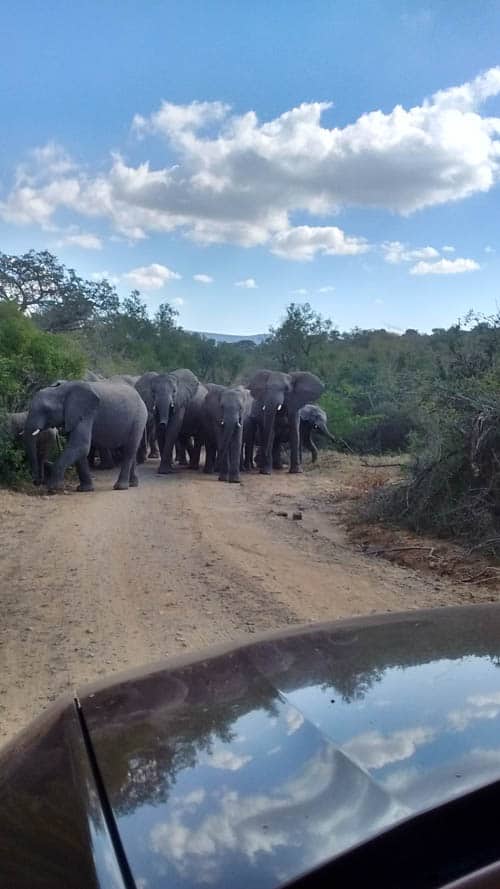
Wildlife Preservation Through Community
What makes this Elephant Park so special, more than the food or the scenery (although both are spectacular), or even the elephants themselves, is the focus of this community. Everyone, from the camp director to the cooks, to the guides themselves is focused on one goal: the preservation of this ecosystem and its inhabitants.
They’ve seen what happens when impoverished communities give in to the lure of ivory poaching. They know there’s nothing worth more than an elephant shambling along with its fellows in the African sunlight. They’re passionate and knowledgeable, and above all appreciative of the beautiful place they live.
Tembe is a gift, but more than that it stands in its sandy soil as an example of conservation done right. Protecting wildlife while empowering the community. It’s a place that allows one to learn, to marvel, to value, and ultimately to protect.
With the challenges facing elephants in Africa including climate change, poaching, and habitat loss, who can say for sure if my grandkids will live in a world where wild elephants still exist. But places like Tembe give me hope.
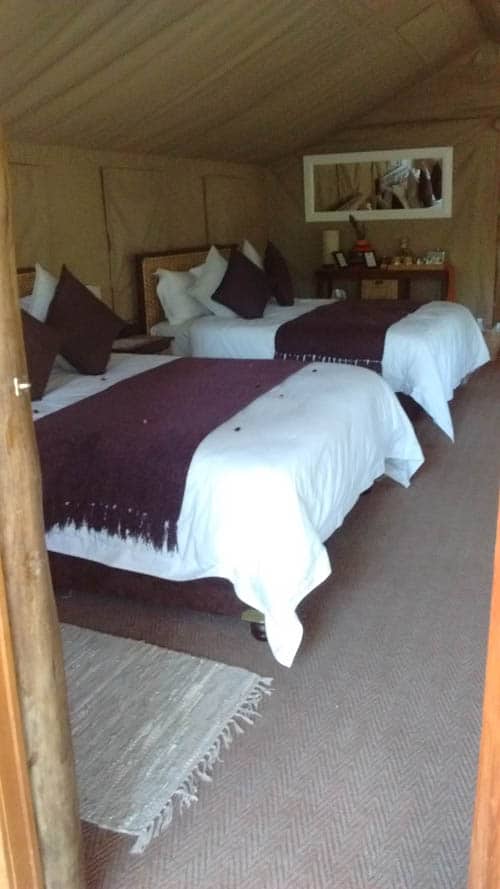
If You Go
- Tembe Elephant Park was established in 1983 to protect the herds of elephants that migrated from KwaZulu-Natal to southern Mozambique.
- The park is located in northern KwaZulu-Natal and is home to roughly 250 elephants, including the largest in the world.
- At Tembe, accommodation consists of beautiful permanent tents that are as comfortable as any hotel room in the US or Canada. Prices vary from 1700-2585 Rand per night (approx $120-180) and include four meals a day and game drives.
- Food at Tembe is fantastic, easily the best of my month-long trip so it is well worth the cost.
- Tembe is roughly 250 miles from Durban and 340 from Johannesburg, a five and seven-hour car ride respectively.
- Tembe also has a live webcam of the watering hole which I described that you can view at any time here: https://explore.org/livecams/africam/tembe-elephant-park. For more information, visit the Park website: https://tembe.co.za/
Author’s Bio: Callahan Rogers is currently a student at Binghamton University. With a passion for traveling, he has been to 28 countries and hopes to complete his goal of visiting 50 by the time he graduates. He lives in the town of Chateaugay, just north of the Adirondacks in the North Country of New York.
- Travel Guide to Austria - April 17, 2024
- Travel Guide to Italy - April 17, 2024
- Travel Guide to Germany - April 17, 2024

